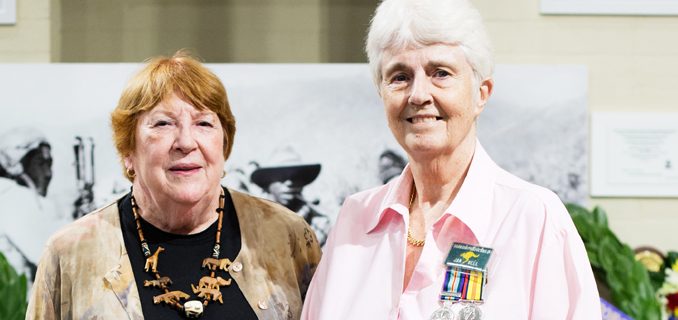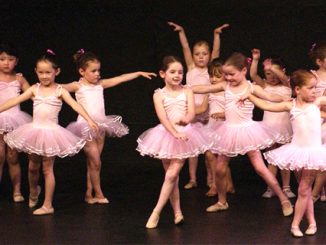
When two young nurses from Concord Hospital left Sydney to treat civilians injured in the Vietnam War their world view was radically changed, writes Phoebe Moloney.
In November 1967, Jan Bell stepped into the busiest airport in the world.
“I was walking down the stairway of the plane, a Pan Am flight. I looked down – I had a mini skirt on – I was dressed as if I was going to a party. As I walked down I realized I was in a vast military airport, everyone was wearing khaki and had guns. People were tearing around in jeeps with machine guns on
the back. “
“I thought, ‘My god, this is a war.’”
Bell had landed in Tân Sơn Nhứt airport, the site of America’s largest military base in Vietnam, located in the city then known as Saigon.
Twelve months later, another nurse from Sydney, Janelle Allan, also landed in Tân Sơn Nhứt. By then half of it was missing. “Oh, that was the international terminal,” pointed out the pilot as she arrived. “It was rocketed last week.”
Jan Bell and Janelle Allan (then respectively aged 27 and 23) were Civilian Nurses, part of the Australian Surgical Team Vietnam (CN-ASTV) dispatched by the Department of External Affairs’ medical aid program. They were sent to Vũng Tàu, a coastal city in Vietnam’s southeast, as part of a small team which was treating Vietnamese civilians.
“It was fascinating year and a terrifying year,” says Bell. “A life-changing experience.”
“My father had the horrors when he found out I was going,” says Allan. “He said, ‘You don’t know what it’s like being in a war-torn country.’”
Both Allan and Bell’s fathers were ex-servicemen. Their daughters trained together in a hospital with a legacy of heroic women.
Constructed as a military hospital in World War Two, Concord Hospital was home to Ellen Savage, the only nurse to survive a Japanese torpedo attack on the hospital ship The Centaur in 1943. For 36 hours Savage floated in the ocean, delivering food, water and first-aid to other survivors holding onto the ship’s debris.
It was Savage’s generation of army nurses who trained Allan and Bell.
“They were wonderful women, but we were scared stiff of them. We were prepared better than many (for Vietnam) because they gave us a lot of leeway in decision making ,” Bell says.
“We went to Vietnam for the adventure,” Allan says. “But also for the feeling that we could do something in a country where there was no one else to do it.”
In Vũng Tàu the nurses treated civilians who had been injured as a direct result of the war as well as those who had been left to suffer ongoing illnesses without doctors, as the majority of the South Vietnam’s doctors had been enlisted into the Republic’s army.
Bell and Allan worked from a Vietnamese hospital, whilst living in dilapidated colonial-era villas. With no sure-fire access to food, medical equipment or supplies the surgical team had to rely on the generosity of the American and Australian service personnel as well as the local interpreters.
“We had tremendous interaction with the soldiers. We also had entry to the American Army Hospital to use the X-ray machine, after ours broke five minutes after arrival,” said Bell.
The team was confronted with illnesses they had never treated in Australia, such as leprosy and tetanus.
“Medically speaking it was like going back a few hundreds of years,” Allan says. “We didn’t have enough nurses to look after the patients,” says Bell. “So the relatives would look after them and change their IV bottles and do the dressings.”
In late January 1968, the traditional Vietnamese New Year celebration of Tet marked a devastating turn in Bell’s year of service.
“All of the Vietnamese people working with us had gone back home to celebrate Tet and we were going to Saigon. There wasn’t a soul on the road. ‘Gee, that’s funny,’ I thought. We had heard that Tet was a busy time where families dressed in their best clothing and visited one and other.
“We arrived at the airport and the American soldiers had their weapons cocked and were in their flack jackets, ‘No Ma’am,’ they said. ‘You’re not going anywhere, Saigon’s been rocketed.”
The five remaining nurses and doctors went back to the hospital to find hundreds of people waiting who had been seriously injured in a series of synchronised attacks that became known as the Tet Offensive.
“I was outside looking after all these people, assessing them and ordering them for surgery. Triaging, although that word hadn’t come into use yet,” Bell recalls.
“There was one poor girl I thought would never make it to surgery, she had a chest injury, was bleeding from the pelvis and was unconscious with a head injury. Her parents had been killed when her house fell in. She had gathered all her younger siblings and brought them to the hospital and collapsed,” Bell says.
The girl regained consciousness when she was reunited with her younger brothers. “After she recovered her and her family always visited us and wrote us lovely letters.” In the weeks following Tet bodies were brought to the hospital and laid on its lawn. Relatives came to identify the dead.
“It looked like a battleground,” says Bell.
Returning to Australia neither Bell nor Allan were debriefed on their service, or offered professional support. The Civilian Nurses have never been granted repatriation benefits despite many contracting Agent Orange-related diseases, and PTSD. “I returned to Sydney and went straight back to the operating theatre and felt very strange,” says Bell.
“Vietnam had changed my whole outlook on life, my nursing, my feelings towards people.”
“My political views completely changed,” says Allan. “I had believed the Domino Theory of Communism. It was what we were taught, it was what our fathers’ said, therefore it must be true.”
“But I realised that Vietnam had been at war so long, for 300 years, they wanted peace at any price. Family were fighting family, there were brothers on either side, families had been torn apart.”
The nurses questioned the heavy loss of Vietnamese, Australian and American lives.
“We also wondered what happened to our interpreters and the people who worked with us, because they would have been treated as conspirators,” says Bell.
The nurses found it hard to share their experiences at home amid the groundswell of anti-Vietnam sentiment.
“No one was interested in talking about it,” Bell says.
They did, however, gain recognition from their former teachers. “We were invited by the World War Two nurses to march with them on Anzac Day when we received our medals. We knew many of those [WWII] nurses.”
Allan eventually decided to organise a marching contingent dedicated to the Australian Surgical Team. Memebers have now been marching together for over 10 years.
Both Bell and Allan eventually returned to work at their ‘home’ hospital of Concord, and Jan Bell still volunteers at the hospital three days a week in the nursing museum.
They also returned to Vietnam. “They don’t talk about the Vietnam War over there; they talk about the American War,” says Bell.
“The big difference was to actually see the people united and to see peace, peace for the very first time.”
For more info visit the EM Lane Nurses Museum. Entry, via Gate 2 Hospital Road, Concord Repatriation Hospital, Concord. Open Mon – Thurs 10am – 4pm.

